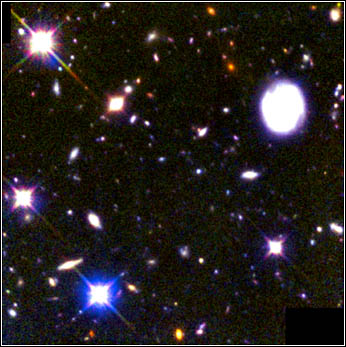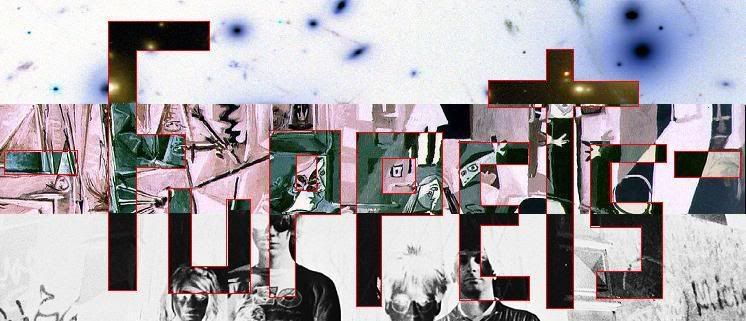The Universe around us appears to be the same in all directions. The distribution of galaxies is the same, statistically, anywhere you choose to look. Astronomers wanted to see just how crowded the universe is, so in 2003 they chose a tiny part of the night sky, seemingly empty according to all the current data of the time, and pointed the Hubble Telescope at this area.
The area covered in this image, soon to be called the Hubble Deep Field Image, covers a speck of the sky only about the width of a dime held 75 feet away from you. That is a tiny, teeny sliver of sky.
When the data from the Hubble arrived, the entire world was astonished to see that, in a part of the Universe considered nearly empty, there were over 1,500 galaxies of varying sizes and shapes visible! It is hard to overstate just how much of a mind-blowing image this was and is.
This is the Hubble Deep Field Image. (click to enlarge)

The Universe itself is much much larger than what scientists refer to as the "observable universe." This is due to the very early moments of the Universe, in which spacetime expanded faster than the speed of light, so that there are whole parts of the universe that, still expanding, are never close enough for their light to have reached us, and never will be. The oldest light we can see is around 14 billion years old. The galaxies in the Hubble Deep Field image are around 13.5 billion light years away. In other words, the photons that are entering the Hubble telescope's lens and camera left their galaxies nearly around the time the universe came into existence. They have travelled through empty space for over 13 billion years and ended their journey on the Hubble's photo-receptors. Below is a great video explaining and describing the Hubble Deep Field Image.
Soon after the scientists aimed the Hubble at a different "empty" area in the southern hemisphere and imaged the Hubble Deep Field South Image.

Soon after the Hubble Telescope took what is the most detailed, furthest from earth image ever taken. It is called the Hubble Ultra Deep Field Image. Click here to check this out. Everywhere we humans look we see more galaxies, thousands and tens of thousands more, each with billions upon billions of stars. It is truly an inconsequential, tiny speck of the universe in which the whole of humanity exists. Insane but true.

2 comments:
Why did you inject profanity (i.e., "Holy F... mindf....")into such a wonderful article?
Juvenalia. It has been corrected. Thanks
Post a Comment